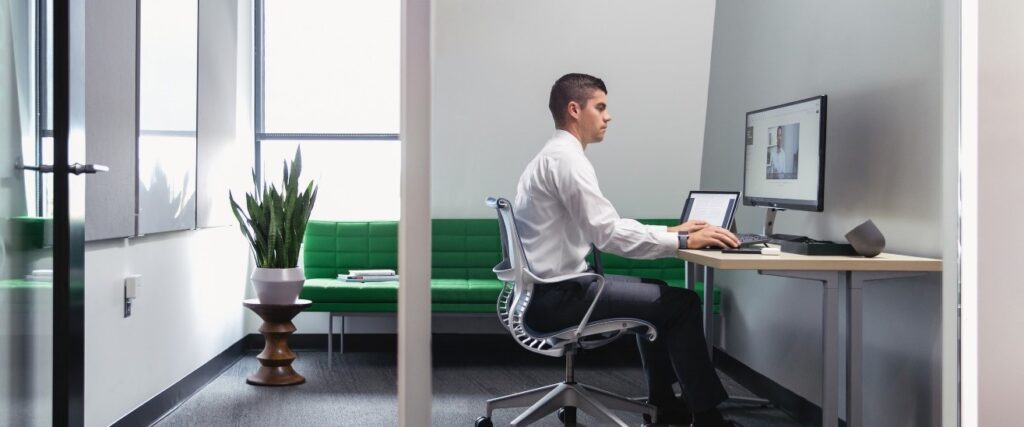

If you are looking for a new office space, you must take laws and legislations into account. There are many codes of practice and guidelines in place that need to be considered for office space design and management.
As a facility manager or an employer, you must be aware of workplace laws in the region you’re based in and determine a compliant space management strategy. In this article, we will explore legislations in place in the UK and the US regions.
UK Laws for Space Management
There are a few UK legislations in place to help ensure organizations are managing their space in the most effective and efficient way. From providing sufficient space for each employee to designing workstations that reduce the risk of injury, these laws all have space management essentials in mind and should be taken on board.

Space per Employee
Regulation 10 of the Workplace, (Health Safety and Welfare) Regulations 1992 states, “every room where people work shall have sufficient floor area, height and unoccupied space for purposes of health, safety and welfare.”
In general, the minimum amount of floor space per person should be 11m3, so there is sufficient space for employees to move through the room with ease. Therefore, the legislation for the amount of space allotted per employee in a workspace, including room dimensions and space requirements, are:
- Minimum of 4.6m2 of floor space per person with average ceiling heights of 2.4m
- Minimum of 3.7m2 of floor space per person with ceiling heights higher than 3m
These figures do not take into account the space taken up by furniture, fittings, equipment, the nature of the work or the layout of the room. If there is limited space, strategic workplace design is vital to make sure every employee is accommodated both comfortably and safely.
The average figure of 11m3 does not apply to:
- Retail sales kiosks, attendants’ shelters, machine control cabs or similar small structures, where space is necessarily limited; or
- Rooms being used for lectures, meetings and similar purposes
Office Furniture
The BS EN 527-1:2011 provides dimension guidelines for workspaces and desks for office tasks to be undertaken in a seated, a sit stand or standing position. This ensures that all employees are comfortable at their workstations and reduces the risk of injury or musculoskeletal disorders.
The HSE also have guidelines for “Seating at work” which goes into detail about how employers can ensure the safety and suitability of workplace seating. Although not compulsory, it is advised for all employers to follow.
Display Screen Equipment
The Display Screen Equipment (DSE) Regulations 1992 is a law that places a duty on employers to protect employees from the health risks related to working with DSE on a daily basis. This includes designing workstations that help employees feel as comfortable as possible.
From PCs to laptops, tablets to smartphones, using these devices for continuous periods of time can cause fatigue, eye strain, upper limb problems and backache. The regulations don’t apply to workers who use DSE infrequently or only use it for a short time.
US Laws for Space Management

In the US, there are state-specific regulations for varying subjects, including corporate real estate. If you are interested in legislations specific to the region your organization is based in, you will need to conduct local zoning law research.
However, the Americans with Disabilities Act (ADA) is a law that protects people with disabilities in many areas of public life, including office spaces. It ensures they are designed to be accessible to employees with disabilities, including features like wheelchair ramps, wide doorways, accessible bathrooms, and appropriate signage.
Why Are There Laws in Place for Space Management?
These laws for space management in the UK and US are not just there to ensure your workspace is compliant with applicable requirements. They have been created to encourage work environments to enhance productivity, well-being and safety.
The physical workplace has a huge impact on employee wellbeing, which ultimately leads to higher job satisfaction and better work performance. When employees feel safe, valued and respected, their employee experience is significantly improved.
At Freespace, our integrated workplace technology does not just help with space management but helps to create exceptional workplace experiences whilst generating significant savings. Check out our space management software and our employee experience app as core areas of understanding space management. You can also check out our latest release, DNAi, for an enhanced intelligence-driven, but tailored per-business approach.
Book a demo today or get in touch with us to discuss your organization’s needs and requirements to see how we can help.


